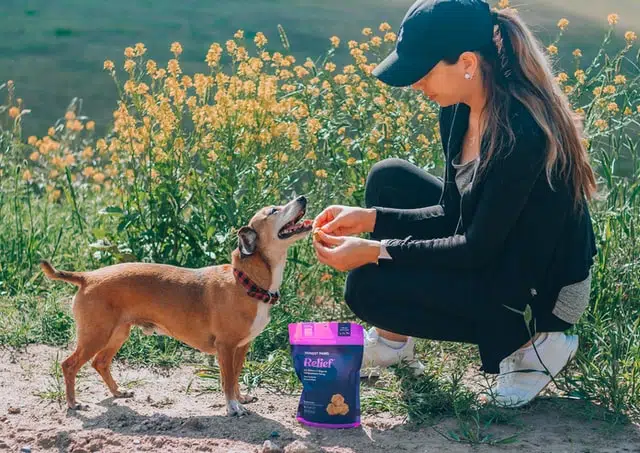Home » Blog » Pet » Pet Health & Safety » Eco Friendly Dog Food: Reducing Our Carbon Pawprint
Categories
Tags
animal welfare
breed profile
buying a car
buying a pet
Car
car accessories
car care
car features
car insurance
Car safety
car sales
car service
cat
cat behaviour
cat body language
Cat Breeds
cat food
cat insurance
comprehensive car insurance
Dog
Dog Behaviour
dog body language
Dog Breeds
dog food
Dog Insurance
dog training
eco friendly cars
Kitten
New Car
pet accessories
pet activities
Pet Adoption
pet breeders
pet days of the year
pet fun stuff
Pet Health
pet insurance
pet parenting
Pet Safety
pet services
Puppy
rescue pets
road safety
road trip
safe driving
Recent Blog:
Facebook Posts
4 days ago
Are intestinal worms setting up camp in your dog’s gut without paying rent? Here’s how to spot the main culprits and get rid of them too:![]()
![]() Preventing, Identifying and Treating Intestinal Worms in Dogs - bit.ly/43YjCKu
... See MoreSee Less
Preventing, Identifying and Treating Intestinal Worms in Dogs - bit.ly/43YjCKu
... See MoreSee Less
Preventing, Identifying and Treating Intestinal Worms in Dogs
www.pd.com.au
Intestinal worms, such as roundworms in dogs are one of the least glamorous topics on the planet. These intestinal parasites that basically use our dogs
PD Insurance
with Dogs West.
6 days ago
We enjoyed meeting #breeders #doglovers and members at the Dogs West Open Day. Special thanks to our partner Dogs West for organising an incredible event. There is still time to enter our pawsome competition. Click here for details: bit.ly/4covyce![]() #PDinsurance #dogswestopenday #dogswest
... See MoreSee Less
#PDinsurance #dogswestopenday #dogswest
... See MoreSee Less
6 days ago
Did you know? The Manx is a breed that is known for its lack of a tail, which is caused by a genetic mutation.
... See MoreSee Less
Eco friendly dog food might not be the biggest pet parenting catchphrase right now but watch this space because it’s going to be! With 4.8 million dogs in Australia, their carbon pawprint combined with ours is big deal, to say the least.
Everything we do uses energy, such as the fossil fuel you and I are burning right now to light up the device we’re reading this article on. Think about the significant amount of water, fuel and waste product (among other things) used to cultivate, package and transport our food and our pets’ food.
What can we do to reduce our carbon pawprint? Well, let’s start with eco friendly pet food.
Does eco friendly dog food exist?
Yep, it certainly does. However, it’s not the biggest or most central pet food on the market right now. As a result, it’s not as easy to find or as affordable as regular dog food.
Take heart though. The more people who want (and Google search for) eco friendly dog food, the more producers are going to want to sell it. And the more affordable and widespread it will become.
While most eco friendly dog food on the market is artisanal, big pet food companies are joining the movement. The president of Nestlé Purina PetCare in the United States says, “I’m always thinking about how our pet foods can provide the best nutrition with the lowest impact on the environment.”
As pet food consumers, we need to be thinking the same thing. As pet parents, our furkids’ consumption has a major effect on what big corporations think and do.

The basics of eco friendly dog food
Whether pet or person, we all need protein in our diet. The quickest and most affordable way for mass food producers to cater to this demand is usually by supplying meat products. And of course, alternatives like soy are also cropping up more and more.
According to The Conversation, many commercial dog foods have 20% – 40% protein. And while meat is a mainstay, it can be an ecological problem. That’s because mass meat farming uses enormous tracts of land, food as fodder and of course lots of water too. Whether it’s pigs, cows, sheep, poultry or fish, massive assembly line and mechanised industries can be ecologically taxing.
In response, many people have turned to vegan and veggie diets, but our pets’ nutritional needs may not suit this. If you’re a raw foodie, it might interest you to read our article on pros and cons of raw food for puppies.
Then again, going meat-free isn’t the only solution to eco friendly dog food…
Ethical dog food that still has meat
Research shows pet food producers can take a different approach to ‘meat-free’ as they strive towards sustainability. For example, suggestions from scientific experts include eco friendly “product design, manufacturing processes, public education, and policy change.”
This approach can include using sustainably sourced meat, recyclable packaging and keeping tabs on food miles.
While policy change may take a bit longer to pass in bigger companies, there are some local trailblazers. A quick Google and these come up:
We’ve also heard great things about Addiction Dog food produced in New Zealand. Read about the difference it can make to dog skin conditions here.
And of course, the list doesn’t end here, more on that below…

How to choose ethical dog food
As buyers we have a lot more power than we sometimes realise. Sure, you can only buy what’s on the market and this may seem dictated by the biggest dice rollers. But you can always make savvy purchase decisions.
There’s a lot of product available and search engines are your little helper. Type in any of the following and your local results will come up:
- ‘Sustainable dog food’
- ‘Ethical dog food’
- ‘Eco friendly dog food’
If you’re a cat mum or dad, simply swap out ‘dog’ for ‘cat’ for your feline search results.
And wait there’s more… as a pet parent, buying locally produced food is a way to reduce fossil fuel use too. Here’s a list of ethical dog food companies that includes locations. Just scroll through and pick and choose ones from Australia and voila!
Now let’s drill into what we might hope for from ethical pet food companies:
Ethical pet food buyer’s checklist
We need to get into the swing of things and expect sustainable solutions from our pet food brands. Here are some markers to look for that can help you decide if your pet food brand is protecting your carbon pawprint.
They may achieve one, all, some, or none of the points on this list. Even if they’re working toward becoming more sustainable that’s a good thing. Here’s what to look for:
Respects water
Water is one of the top resources used in the mass production of food. It’s used in the making of the product and it’s used when by-products or waste are dropped into rivers.
Global warming might be the biggest pinpoint on the Holocene era that we’re currently in. It’s a particularly drought-filled and generally drier time in earth’s history. So responsible use of water is crucial.
Responsible brands need to use water carefully and wisely and do their part to prevent over consumption. That includes reusing wherever possible.
Produces less waste
Wherever products are manufactured, by-products are too. Pet food companies that actively seek out innovative methods of production can produce less waste.
Less waste equates to lower energy consumption and less polluted air, land and water. This approach can be applied to the production and packaging phases. It includes repurposing excess energy and/or materials, as well as designing reusable and recyclable packaging.
At home and at work, it’s also up to us to reuse and recycle packaging as much as possible (and call it out when you colleagues, family or friends get slack!).
Long-term vision
Carbon friendly production isn’t about quick fixes. It requires a holistic approach to all aspects of a business. Innovative methods can be constantly ideated, planned and implemented. For example, working with farmers that use fewer chemicals and free-range methods.
Hormone free and antibiotic free meat is healthier for our pets too, so it’s a win-win situation.
As individuals, societies and people who form meaningful parts of companies we all need to consider our depleting resources. Let’s look for brands committed to long term goals for achieving sustainable practice.
Sustainable supply
After production and packaging, food miles and fuel usage count toward our carbon pawprint. Both we and our pet food brands need to use sustainable supply chains. Brands with a view to zero waste will also partner with suppliers with the same outlook.
Purina says we should seek out brands that “preserve soil and promote clean water, biodiversity and other factors that create healthy ingredients and a healthy ecosystem” We like!

Dog food CAN be eco friendly
As a pet parents, striking a balance between food that sustains our dog’s health and the planet’s wellbeing is possible. Help curb climate change by finding a pet food company that ticks one or more of these boxes.
And as a consumer, buying from ethical pet food manufacturers also makes us feel good.
Dog insurance for sustainable wellness
As a conscientious pup parent, dog insurance is a no-brainer. It’s affordable for your bank account and helps you give give pooch immediate access to medical testing, treatments, hospitalisation, medication and more for accidental injuries and a wide range of illnesses.
Share On:




